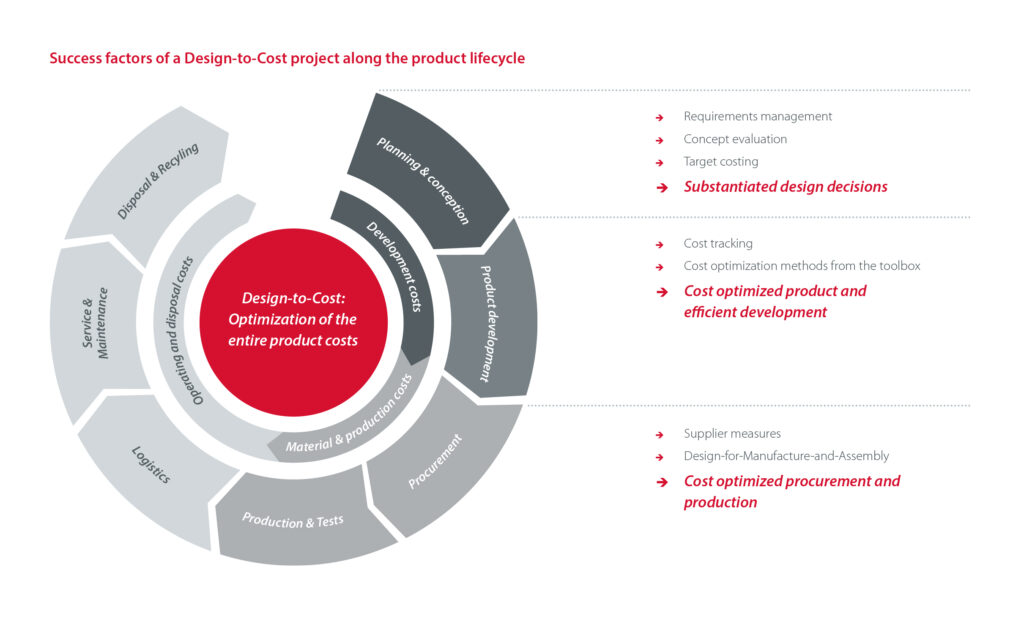Controlling the costs early with Design-to-Cost
Making the right decisions from the start
Decisions made in the concept stage of new products or product generations determine product costs in the entire product life cycle. To set the right course, the cost impact of all requirements and design choices must be known, ideally even before development starts (in the planning & design phase). This is where the TARGUS Design-to-Cost approach starts and then accompanies the entire development process up to the start of production.
In a multi-stage process, the requirements are defined, target costs for the product and its components are derived (target costing), and various implementation concepts are identified and evaluated. The product costs and other costs in the product life cycle are taken into account. Key components of this process are requirements management, concept selection by means of a morphological box, and the integration of product value via value analysis.
For a holistic assessment of all aspects and impacts, the involvement of all stakeholders including suppliers and, if applicable, the customer is of considerable importance.

Cost tracking and optimization accompanies the development process
In addition to applying optimization methods from TARGUS’ PCM Toolbox, stringent cost controlling and action tracking is necessary. Only the regular comparison of target and current costs allows for timely reaction to deviations.
The development costs must be considered
Development costs play a significant role, especially for complex products that are manufactured in small numbers. Here, potentials for material and manufacturing costs have to be weighed against the resulting development effort or methods have to be found to reduce development costs.
Central to an optimized development process is an early, thorough analysis and definition of requirements. This additional effort at the beginning (frontloading) prevents wasting effort on changes over the further course of the development process. In addition, clear roles and responsibilities, escalation and decision-making processes, as well as proactive change-management must be established. In addition to reduced costs, positive effects of such an optimization of the development process include faster time-to-market and a higher degree of product maturity.
To reduce development costs, it is also advisable to modularize and standardize product components (also see product structure management).

Project results
- Early cost transparency
- Sound design decisions
- Cost optimization
- Faster time to market


